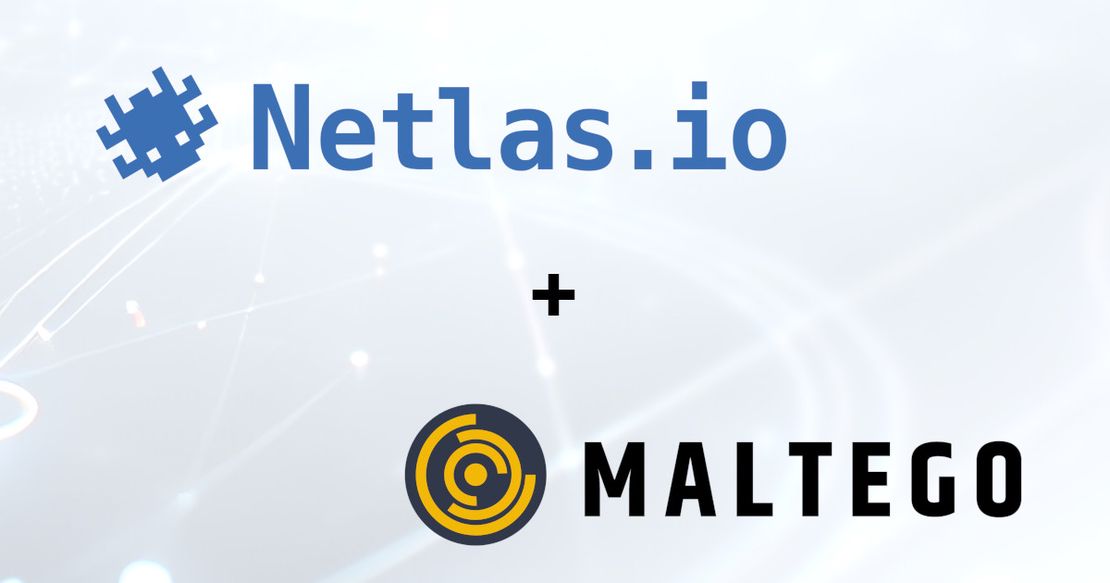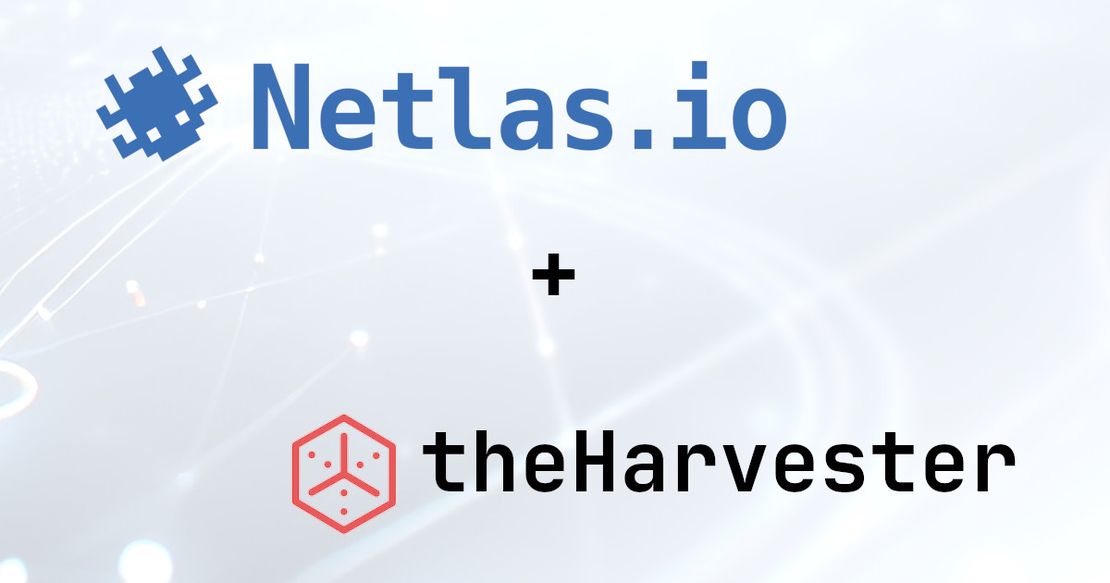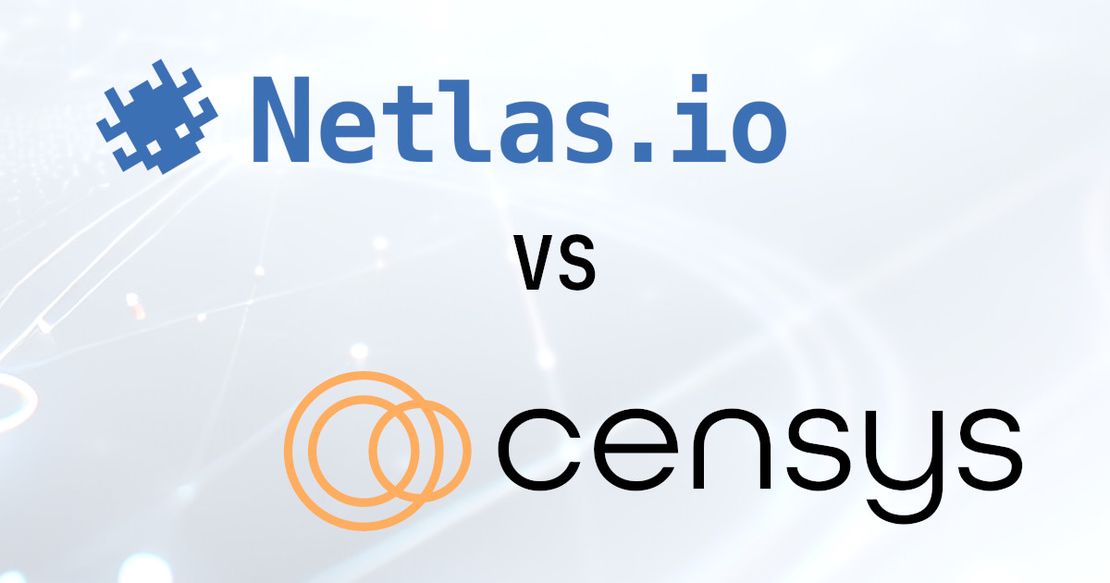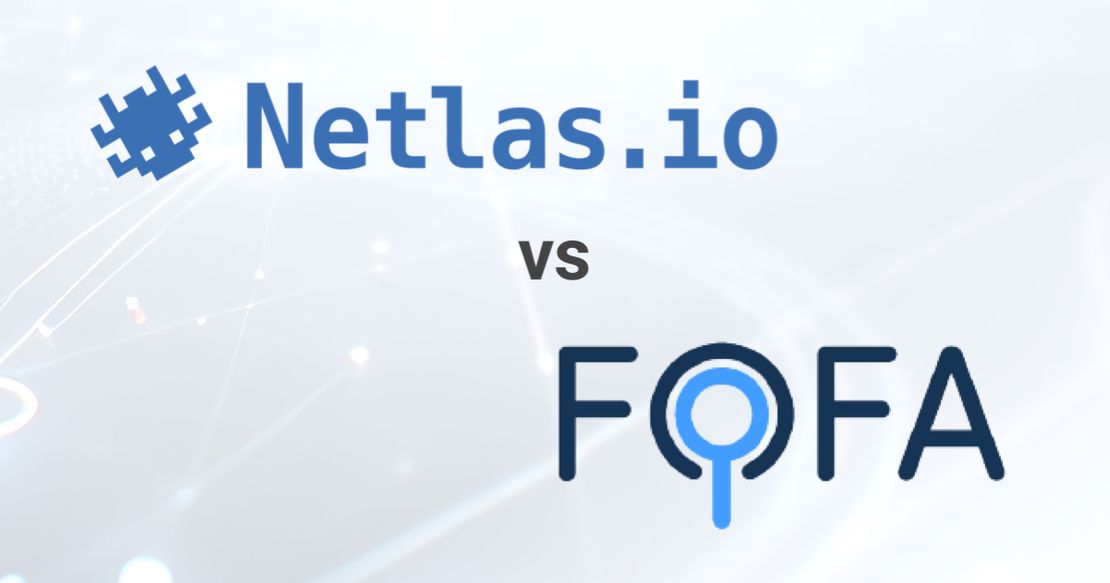Top 15 OSINT Tools for Expert Intelligence Gathering
February 14, 2025
19 min read
OSINT tools are vital for contemporary intelligence efforts, particularly in detecting and addressing vulnerabilities within cybersecurity infrastructures. These tools are indispensable for organizations aiming to enhance their threat detection capabilities and minimize risk exposure. With their growing significance, the global market for open-source intelligence is expanding rapidly. From a valuation of $5.02 billion in 2018, the sector is anticipated to reach $29.19 billion by 2026, with a CAGR of 24.7% from 2020 to 2026.
This article explores the essential role of OSINT tools, detailing their evolution and their ability to provide actionable insights. Whether monitoring cybersecurity threats, gathering market intelligence, or analyzing public data, OSINT platforms offer an extensive data pool that is critical for informed decision-making and strategic planning.
By implementing advanced OSINT frameworks and utilizing the most current intelligence platforms, professionals can efficiently process large volumes of data, uncover key insights, recognize emerging threats, and improve their capacity to monitor and address security risks in real-time.
Key Insights and Applications of Open Source Intelligence Websites
OSINT tools are vital for efficiently gathering and analyzing publicly available data. Both governments and businesses use them to understand market trends, competition, and brand positioning. Over time, these tools have advanced, incorporating technologies like web scraping, social media tracking, geospatial analysis, and AI to improve the speed and accuracy of data processing.
Platforms such as The Internet Archive, Mitaka browser extensions, and advanced search methods like Google Dorks are essential for delving into the unindexed parts of the web, providing deeper insights. These tools enhance intelligence gathering by accessing content often missed by standard search engines.
It’s important to follow legal guidelines, such as GDPR, when conducting OSINT to ensure ethical data collection. This includes respecting data usage laws, utilizing public records and social media monitoring tools, and ensuring transparency and security in all data gathering activities.
Introduction to Open Source Intelligence Sources and OSINT Sites
Open Source Intelligence (OSINT) refers to:
- The practice of collecting and analyzing information from publicly accessible channels
- Converting unrefined data into meaningful, actionable intelligence
- Increasingly sought-after as the digital world grows at an unprecedented pace
- Utilized by both public institutions and private enterprises for surveillance, enhancing cybercrime investigations, and more
- Offering crucial insights into market trends, consumer behavior, and corporate strategies
OSINT relies on an array of open data sources, leveraging a variety of methods to extract intelligence, including:
- Broadcast media, including television and radio
- Social networking platforms
- Websites and blogs
- Public records and databases
OSINT is an invaluable asset for extracting diverse forms of content such as text, images, video, and audio. The integration of sophisticated technologies like machine learning and neural networks plays a pivotal role in identifying patterns, detecting trends, and pinpointing critical entities such as people, organizations, and topics by analyzing vast datasets. These technologies empower professionals to derive deeper insights from complex, unstructured data across multiple sources.
The Importance in Intelligence Analysis
Open Source Intelligence (OSINT) plays a vital role in managing the overwhelming flow of publicly available data. It is essential for accomplishing three key objectives in intelligence work, and numerous OSINT tools have been created to address these tasks. While many tools are versatile and can handle all aspects, several specialize in specific functions, excelling in particular areas of intelligence gathering and analysis.
OSINT Framework: Mapping Public-Facing Assets
The primary role of OSINT tools is to assist IT teams in identifying publicly accessible assets and mapping the specific information each one holds, which could potentially expose a company to security risks. These tools focus on cataloging what details are openly available about a company’s assets without engaging in malicious activities like hacking or penetration testing. Their primary function is to document public information that could be used to assess vulnerabilities, rather than detecting program flaws or attempting unauthorized access.
Key functions include:
- Identifying publicly visible company assets
- Cataloging available information from websites, social media, and public records
- Assessing potential risks linked to exposed data
- Enhancing cybersecurity measures by understanding what is openly accessible about the organization
- Supporting proactive risk management without performing penetration tests
This approach allows organizations to strengthen their security posture by understanding what information is already publicly available and could be leveraged for cyberattacks.
Utilizing OSINT Sources and OSINT Sites to Discover External Information
A secondary role that some OSINT tools fulfill is the discovery of pertinent information beyond an organization’s boundaries. This includes searching through social media content or exploring domains and locations that fall outside the strict confines of the company’s established network. This capability is particularly valuable for organizations that have undergone multiple acquisitions, as it helps assess the IT assets integrated from merged entities. With the rapid expansion and widespread use of social media platforms, the need to search for sensitive data outside the organization’s immediate perimeter is becoming increasingly essential for nearly every enterprise.
Key applications of this function include:
- Scanning social media for publicly shared information relevant to the organization
- Exploring external websites and domains linked to potential risks
- Identifying valuable data from third-party sources and acquisitions
- Monitoring locations beyond the company’s direct network for emerging threats
This broader scope of intelligence gathering helps organizations stay ahead of potential security risks and better manage external-facing vulnerabilities.
Systematizing Information with OSINT Decipher Tools into Actionable Intelligence
Some OSINT tools are designed to aggregate and organize all the gathered data into structured, actionable insights. Conducting an OSINT scan for a large organization can generate an overwhelming amount of data, often reaching hundreds of thousands of entries, especially when considering both internal and external assets. The ability to organize and prioritize this vast array of information is essential for addressing the most pressing issues first. This process of sorting, analyzing, and focusing on high-priority data is crucial for effective decision-making and quick response to potential security threats.
Key benefits of this process include:
- Collecting vast amounts of data from various sources and transforming it into organized intelligence
- Prioritizing critical issues based on urgency and impact
- Enhancing the ability to act on key findings promptly
- Converting raw data into practical insights for strategic decision-making
- Improving operational efficiency by focusing on the most relevant threats
By transforming chaotic data into a clear, prioritized action plan, these tools provide invaluable support for organizations in managing security risks more effectively.
Tracing the Development of Open Source Intelligence Tools and OSINT Websites
OSINT tools have undergone considerable advancement over the years. Originally centered around analyzing traditional media sources such as newspapers and radio broadcasts, these tools have now expanded to leverage the vast array of information found across the internet, including data from both public and private sectors. Today’s OSINT tools go beyond simple search functions, incorporating sophisticated data analytics and visualization technologies to enhance their capabilities.
Integrating cutting-edge technologies like web scraping, social media monitoring, and geospatial intelligence, these tools have transformed the way organizations extract, analyze, and interpret information from multiple sources.
Looking ahead, the development of OSINT tools is expected to be shaped by innovations in artificial intelligence (AI) and machine learning (ML), which will provide even greater accuracy and speed in processing large datasets and producing actionable insights.
Many of the leading OSINT platforms are equipped with advanced features that improve the intelligence gathering process. One such feature includes automated data transformations, which allow raw information to be converted into more practical or digestible formats. Additionally, many OSINT tools offer customizable transformation options to tailor data collection and analysis to meet specific user requirements.
Unlock the potential of OSINT with specialized training. Enroll in Recorded Future University’s free Intelligence Fundamentals Course, become a certified analyst, and start turning data into actionable intelligence. Share your new credentials on LinkedIn and elevate your professional profile.
Overview of 15 Best OSINT Tools Free for Professional Use
A variety of free OSINT tools are available for both individuals and organizations to begin utilizing immediately. These tools offer a broad spectrum of features, catering to diverse intelligence-gathering needs and serving a wide range of purposes in the field of open-source intelligence.
Exploring the Open OSINTFramework and OSINTTools
The OSINT Framework is a comprehensive, web-based tool designed to assist researchers in locating and utilizing open-source intelligence resources. It categorizes tools and data sources by source, type, and context, facilitating efficient information gathering. This framework is widely adopted across various sectors, including government agencies, law enforcement, and corporate security, to meet diverse data collection needs. Community contributions continually enhance the framework, ensuring it remains up-to-date and relevant. Its operation adheres to legal standards like GDPR, ensuring ethical data collection practices.
Best for: Organizing and accessing a wide array of open-source intelligence tools and resources.
Who is it for: Security researchers, government agencies, law enforcement, and corporate security teams seeking structured access to OSINT resources.
Top features:
- Categorization of tools by source, type, and context.
- Regular updates through community contributions.
- Adherence to legal standards like GDPR for ethical data collection.
Enhancing Search Capabilities with Google Dorks
Google Dorks are advanced search operators that enable users to perform specialized queries on Google, uncovering information not readily accessible through standard search methods. Since their inception in 2002, these queries have been instrumental in security investigations, allowing the discovery of specific file types, extensions, text within pages, titles, and URLs. They are invaluable for exploring details about individuals and companies, often revealing sensitive information inadvertently exposed online.
Best for: Conducting advanced searches to uncover specific information or vulnerabilities.
Who is it for: Cybersecurity professionals, penetration testers, and researchers aiming to identify exposed data or security weaknesses.
Top features:
- Ability to locate specific file types and extensions.
- Search within specific domains or websites.
- Identify text within pages, titles, and URLs.
You can read more about Google Dorking technology in our article on this topic.
Gathering Data with theHarvester: A Premier OSINT
theHarvester is an open-source intelligence gathering tool included in the Kali Linux distribution. It is utilized to collect information about subdomains, virtual hosts, open ports, and email addresses related to any company or website. By leveraging sources such as PGP key servers, search engines like Google and Bing, and social networks like LinkedIn, theHarvester supports both passive reconnaissance and active penetration tests. This tool is particularly useful during the initial stages of penetration testing on both local and third-party authorized networks.
Best for: Collecting information for reconnaissance and penetration testing.
Who is it for: Penetration testers, security researchers, and IT professionals conducting network assessments.
Top features:
- Collection of subdomains, virtual hosts, open ports, and email addresses.
- Utilization of multiple data sources, including search engines and social networks.
- Support for passive reconnaissance and active penetration testing.
Extracting Insights from SecurityTrails API on OSINT Websites
The SecurityTrails API provides instant access to current DNS server records, historical records (DNS history), domain details, associated domains, IP information, and WHOIS data. This API allows integration into custom applications for asset discovery, threat intelligence, risk scoring, and more. A single HTTP request retrieves the data, streamlining the process of obtaining comprehensive domain information.
Best for: Integrating comprehensive domain and DNS data into custom applications.
Who is it for: Developers, security analysts, and organizations requiring detailed domain information for various applications.
Top features:
- Access to current and historical DNS records.
- Retrieval of domain details, associated domains, IP information, and WHOIS data.
- Simple HTTP request interface for data retrieval.
In addition to SecurityTrails, you can also use other tools to study DNS records. More details on this are given in our other article.
Network Intelligence through BGPView in OSINT Practices
BGPView is a tool that simplifies the tracking of BGP routing information and IP address data, facilitating network monitoring tasks. It enables the analysis of network configurations, identification of security threats, and monitoring of routing changes directly from a browser. This intuitive network tool offers comprehensive insights, aiding in informed decisions to optimize network performance and identify threat actor origins.
Best for: Monitoring BGP routing information and IP address data.
Who is it for: Network administrators, security analysts, and IT professionals responsible for network performance and security.
Top features:
- Tracking of BGP routing information and IP address data.
- Analysis of network configurations and identification of security threats.
- Monitoring of routing changes directly from a browser.
Accessing Recorded Future’s Vulnerability Database
Recorded Future’s Vulnerability Database is a comprehensive resource offering detailed information on the latest software vulnerabilities. It provides security teams with insights into CVE scores, attack complexity levels, affected products, and mitigation strategies, enabling proactive vulnerability management.
Best for: Staying informed about emerging vulnerabilities and enhancing vulnerability management processes.
Who is it for: Security professionals, IT administrators, and organizations aiming to strengthen their cybersecurity posture.
Top features:
- Access to a curated collection of the latest software vulnerabilities.
- Detailed CVE information, including CVSS scores and attack complexity levels.
- Insights into affected products and available mitigation resources.
Analyzing Malware with Triage Malware Sandbox
Triage is an advanced malware analysis sandbox that allows users to submit and analyze malware samples in a controlled environment. It supports high-volume submissions and provides detailed reports on malware behavior, aiding in the detection and extraction of configurations for various malware families.
Best for: Conducting in-depth analysis of malware samples to understand their behavior and potential impact.
Who is it for: Malware analysts, incident response teams, and cybersecurity researchers.
Top features:
- High-volume sample submission capability.
- Customizable analysis environment.
- Detection and configuration extraction for multiple malware families.
Browser-Based OSINT Gathering with Mitaka
Mitaka is an OSINT browser extension designed to streamline intelligence-gathering tasks. It integrates various OSINT modules, providing users with intuitive access to diverse features for efficient reconnaissance and investigative activities.
Best for: Enhancing daily operations by providing quick access to OSINT tools directly from the browser.
Who is it for: Security professionals, investigators, and researchers seeking efficient OSINT solutions.
Top features:
- Integration of multiple OSINT modules.
- User-friendly interface for seamless navigation.
- Direct access to intelligence-gathering features from the browser.
Extending OSINT Capabilities with Recorded Future’s Browser Extension
Recorded Future’s Browser Extension enables users to access intelligence data from any web-based resource, streamlining security operations. It assists in investigating phishing emails, detecting indicators of compromise (IOCs), prioritizing vulnerability patching, and expediting alert processing within Security Information and Event Management (SIEM) systems.
Best for: Integrating threat intelligence into daily workflows to enhance security operations.
Who is it for: Security analysts, incident responders, and IT professionals.
Top features:
- Investigation of phishing emails.
- Detection of IOCs.
- Prioritization of vulnerability patching.
- Integration with SIEM systems for efficient alert processing.
Security Checks with Have I Been Pwned: Trusted OSINT in Action
Pwned is a platform that enables individuals and organizations to verify if their accounts have been compromised in documented data breaches. Developed by security expert Troy Hunt, it provides accurate reports on compromised accounts across various platforms, including Gmail, LinkedIn, and many others.
Best for: Verifying if personal or organizational accounts have been exposed in data breaches.
Who is it for: Individuals, security professionals, and organizations concerned about account security.
Top features:
- Searchable database of compromised accounts.
- Coverage of multiple platforms and services.
- Regular updates to include new breaches.
Building Intelligence Profiles with BuiltWith Using Tools
BuiltWith is a comprehensive profiler that identifies the technologies deployed on websites, ranging from server frameworks to analytics and content management systems. It offers in-depth analysis of web setups, which is crucial for competitive intelligence and technology strategy development. This tool is vital for those seeking insights into the tech infrastructure of digital platforms.
Best for: Analyzing and profiling the technological stack of websites to inform strategic decisions.
Who is it for: Business analysts, competitive intelligence professionals, and technology strategists.
Top features:
- Detailed technology profiling of websites, including server frameworks, analytics tools, and content management systems.
- Comprehensive insights into the technology stack, such as JavaScript libraries, advertising platforms, and eCommerce tools.
- The ability to identify changes in website technology over time, useful for tracking competitive shifts.
Uncovering Network Insights with Shodan: A Leading OSINT Tool for OSINT Sites
Shodan, conceived by John Matherly in 2009, serves as a network security monitor and specialized search engine for the deep web and Internet of Things (IoT). It enables users to explore a plethora of network-connected devices, organizing results by country, operating system, and network type, providing invaluable insights for IT security researchers.
Best for: Discovering and analyzing internet-connected devices to assess network security.
Who is it for: Cybersecurity professionals, penetration testers, and network administrators.
Top features:
- Powerful search engine for exploring internet-connected devices across the world, providing insights into IoT and deep web resources.
- Filters by device type, service, geographical location, and software version to pinpoint specific vulnerabilities.
- Real-time access to detailed device information, including IP addresses, ports, and banners, revealing key security risks.
Integrating SpiderFoot for Comprehensive OSINT Operations
SpiderFoot, created by Steve Micallef, is recognized as a leading tool for automated OSINT gathering, delivering fast outcomes in reconnaissance, threat intelligence, and boundary monitoring. It utilizes more than 100 open data sources to collect intelligence on various objectives, such as domain names, email addresses, and IP addresses, streamlining the procedure with simple module choices and target identification.
Best for: Automating the collection of open-source intelligence across multiple data sources.
Who is it for: Security researchers, threat intelligence analysts, and penetration testers.
Top features:
- Integrates with over 100 public data sources, including WHOIS, DNS, and social media platforms, for thorough OSINT investigations.
- Automates OSINT collection, reducing manual work and accelerating the intelligence-gathering process.
- Modular setup for easy selection of specific data sources or investigative areas, allowing for customized reconnaissance.
Strategic Intelligence with Maltego: Best OSINT Tool
Maltego, created by Paterva and included in the Kali Linux distribution, is a powerful tool designed for in-depth digital investigation of targets. It employs “transforms” to combine and examine data from third-party applications, offered in both free and paid versions. Users can initiate inquiries to gather detailed outcomes, including IPs, domains, and AS numbers, through Maltego’s platform.
Best for: Visualizing and analyzing relationships between various data points to uncover hidden connections.
Who is it for: Cyber threat intelligence teams, law enforcement agencies, and investigative journalists.
Top features:
- Provides advanced graphical link analysis, helping visualize relationships between various data points (IP addresses, domains, and individuals).
- Transforms raw data into actionable intelligence by integrating information from multiple sources such as WHOIS, DNS, and social networks.
- Built-in pivoting functionality to easily navigate from one data point to others, uncovering hidden connections.
Maltego uses hundreds of different data sources, both official and provided by third parties. For example, you can connect Netlas transformations during its use. More information about this is given in the article “Using Maltego with Netlas Module”.
Comprehensive Network Scanning with Nmap
Nmap is a powerful network scanning tool that allows users to discover hosts and services on a computer network, thus creating a “map” of the network. It is widely integrated into many OSINT platforms and is considered a formidable tool for intelligence gathering. Nmap offers numerous commands to perform reconnaissance processes from both the terminal and graphical user interface (GUI).
Best for: Conducting network discovery and security auditing.
Who is it for: Network administrators, security auditors, and penetration testers.
Top features:
- Wide array of scanning options including port scanning, OS detection, version detection, and scriptable interactions.
- Flexible output formats, including detailed reports, XML, and GUI-based visualizations for easier analysis.
- Highly customizable scan options, allowing users to adjust for stealth, timing, and packet types for comprehensive reconnaissance.
Practical Applications in Real-Life Scenarios
Advanced Search Engines and Open Source Intelligence Tools
Sophisticated search engines are essential for exploring and examining material from the deep web, which is not cataloged by conventional search engines but is still publicly available. Platforms like Intelligence X combine archival and search functionalities, granting users access to historical web pages and datasets that may have been removed from the public internet. Similarly, resources like The Internet Archive, Babel X, and AttackerDB enable the investigation of threat actors and intelligence data gathered from both the deep and dark web, often in collaboration with content owners.
Search engines that are region-specific or designed with a focus on privacy provide essential tools for open-source intelligence (OSINT), offering localized search results and operating independently of mainstream search engines.
Additionally, tools like Mitaka, an OSINT browser extension, enhance search efficiency by integrating multiple search engines, enabling users to conduct queries for various digital indicators directly from their browser. This approach streamlines the gathering of intelligence across diverse online platforms, optimizing the research process.
Deepening OSINT Analysis with Advanced Google Dorks Techniques and OSINT Websites
Advanced search commands, commonly referred to as Google dorks, are powerful tools for extracting deeper insights from Google. These commands go beyond regular search terms, allowing users to instruct Google to perform searches in highly specific ways. Automated platforms such as Dork Search, Advangle, and DorkGenius are designed to make the creation and recommendation of these advanced search queries more accessible and efficient.
These resources enable users to pinpoint precise data, such as files in a particular format, pages linking to specific websites, or specific content on a webpage. Researchers use Google dorks to discover obscure information, security experts rely on them to identify vulnerabilities, and malicious actors might exploit them to uncover confidential data.
Accessing Specialized Dark Web OSINT Services
Exploring the dark web, a segment of the internet not indexed by conventional search engines, can be challenging. However, dark web search platforms have simplified this process. These search engines allow users to safely explore dark web content without needing specialized browsers, making them essential tools for comprehensive dark web monitoring. They enable the scanning of various sources, including both public web locations and certain dark web domains.
One of the main advantages of these services is their ease of access. They are available free of charge, can be used from regular web browsers, and don’t require tools like Tor, making the search experience more accessible and user-friendly.
As highlighted in our recent post, “Improving Dark Web Investigations with Threat Intelligence,” Recorded Future’s Dark Web Intelligence enhances dark web OSINT by delivering in-depth, actionable insights into covert cyber activities. This tool helps organizations effectively identify and monitor emerging threats such as stolen data and compromised systems.
Our solution revolutionizes traditional OSINT practices by offering thorough audits of dark web forums, marketplaces, and encrypted messaging platforms. This proactive approach alerts organizations to potential security risks and data leaks, prompting timely interventions to mitigate vulnerabilities.
Leveraging OSINT Social Media Tools for Deep Investigations
Social media networks have become a valuable source of open-source intelligence (OSINT), providing abundant publicly available data that can be utilized for research and analysis. OSINT tools such as Instant Data Scraper and TG-API enable the extraction of valuable data from a wide range of social media platforms, including Facebook, Instagram, Twitter, and Telegram.
These tools not only facilitate the collection of data but also empower analysts to process and examine it. Tools like Paliscope YOSE allow analysts to create link diagrams and visualize connections, enhancing the ability to conduct comprehensive investigations into online activities and relationships. This capability is particularly useful for understanding market dynamics and user behaviors.
Both security experts and malicious actors make use of these tools—security teams to identify unintended data leaks across social media platforms, and cybercriminals to exploit exposed information for launching targeted attacks, such as phishing campaigns against corporate insiders.
Exploring Public Records and Databases with OSINT Virtual Tools
Public records and databases provide an extensive collection of publicly available information that can be invaluable for open-source intelligence (OSINT). These records can range from details on property ownership, criminal backgrounds, and social media interactions, to financial histories and business registrations. Specialized search engines and databases are designed to help users efficiently navigate through this wealth of public data, offering both current and historical information crucial for OSINT operations.
The widespread accessibility of OSINT tools has been significantly enhanced by the availability of affordable resources. These tools have lowered barriers to entry, making open-source intelligence gathering more accessible to a broader range of organizations and investigative professionals, regardless of their scale. This has expanded the reach of OSINT, enabling a wider variety of stakeholders to unlock its benefits. Some of the highly effective, cost-friendly tools include:
- Social media monitoring platforms that track public discussions, trends, and potential threats across various platforms.
- Web scraping tools that extract and collect data from websites to analyze large volumes of unstructured information.
- Data visualization software that transforms raw data into intuitive charts and graphs for easier analysis and decision-making.
- Image and video analysis tools that help interpret multimedia content, such as identifying faces, locations, or identifying potentially harmful activities.
These tools not only enhance the efficiency of OSINT practices but also provide essential insights that help in making informed decisions across a range of industries.
Integrating Data Analytics into the Open Source Intelligence Framework
Analytics are crucial in optimizing OSINT practices, enabling more accurate and timely intelligence gathering. By combining big data analytics with cutting-edge technologies such as artificial intelligence (AI) and machine learning, organizations can significantly improve the precision and efficiency of their intelligence analysis. This synergy allows for the extraction of valuable, actionable insights that support strategic decision-making based on comprehensive data analysis.
Advanced OSINT analytics tools provide numerous advantages, including:
- Automation of tasks to minimize human errors and accelerate the data processing workflow, enhancing overall productivity.
- Rapid identification of emerging threats and the ability to conduct real-time monitoring, allowing for swift responses to potential risks.
- Data visualization capabilities that transform raw data into easy-to-understand charts, graphs, and dashboards, simplifying complex information for better decision-making.
- Verification and debunking of images and videos through specialized tools like InVID and WeVerify, helping to identify manipulated media and ensuring the integrity of data used in investigations.
- Trend analysis to uncover patterns in data, which helps in predicting future risks and understanding ongoing developments.
- Sentiment analysis to gauge public opinion and identify potential security threats or areas of concern.
Integrating tools like the OSINT Framework and real-time analytics platforms enhances situational awareness, providing insights into dynamic events, incidents, and shifts in trends. This real-time access to data enables stakeholders to make well-informed decisions, whether for cybersecurity, business strategy, or public policy.
Digital Profiling Techniques
OSINT technologies facilitate the development of detailed digital profiles for individuals or organizations. These profiles are built by aggregating various public data sources through the use of specialized OSINT tools. For example, Maltego aids in quick data collection and visualization from diverse sources, while tools like ADINT track movements and unique identifiers across a range of advertising platforms.
Investigators employ targeted strategies, such as domain name searches, to gain a deeper understanding of an individual’s or entity’s online footprint. These online activities can be traced through several key identifiers, including:
- Email addresses, which link to accounts and online interactions.
- Phone numbers, providing access to contact details and verification services.
- IP addresses, allowing tracking of geographic location and device activity.
- MAC addresses, unique to each device, aiding in tracking movements across networks.
- Operating system identifiers, revealing system usage patterns and potential vulnerabilities.
Additionally, digital profiling techniques can be enhanced by leveraging social media platforms, public records databases, and geolocation data. These resources enable deeper insights into personal behaviors, preferences, and connections across the digital space, aiding in more comprehensive investigations.
OSINT Insights: How to Decrypt OSINT Code and Conduct Development Analysis Through OSINT Apps
OSINT can deliver crucial insights into code and software development processes. Tools like grep.app, searchcode, and SourceGraph enable thorough searches across multiple git repositories, helping to identify code snippets, uncover patterns, and support the analysis of open-source projects.
Code search engines such as grep.app, NerdyData, and PublicWWW assist researchers—ranging from academics to industry experts—in understanding coding structures, tracking competitive trends, and identifying key implementations that reveal deeper development insights. These tools are invaluable for examining the following:
- Code snippets and strings to identify recurring patterns or vulnerabilities.
- Development trends that highlight popular technologies or emerging techniques.
- Competitive analysis, allowing organizations to assess how others approach development challenges.
- Code functionality and structure, providing insights into specific implementations and software capabilities.
- Open-source contributions, tracking how projects evolve and the types of modifications being made.
By leveraging these OSINT tools, researchers and developers can gain a deeper understanding of the software landscape, including spotting inefficiencies, identifying opportunities for improvement, and driving innovation based on existing codebases.
FAQs on Effective Use and Decrypting OSINT Code
Understanding the Functions of Open Source Intelligence Tools and OSINT Websites
An Open Source Intelligence (OSINT) tool is designed to collect publicly accessible information from a variety of platforms, such as social media, websites, and news outlets, to identify potential vulnerabilities and inform security strategies. These tools help researchers gather insights into emerging threats, trends, and risks, making them vital for cybersecurity and investigative purposes.
Strategies for Using Social Media
Social media networks act as a rich source of publicly accessible information, which can be leveraged for OSINT using dedicated tools. Tools such as Instant Data Scraper and Paliscope YOSE allow users to gather and analyze data from different social media platforms, offering crucial insights into digital behaviors, engagements, and relationships. Primary approaches for utilizing social media for OSINT include:
- Monitoring public profiles to track individuals or organizations’ online presence and behaviors.
- Retrieving metadata from social media updates, pictures, and videos to examine content trends and detect possible security threats.
- Analyzing interactions between users to detect relationships and detect potential threats or vulnerabilities.
- Tracking social media trends and conversations to understand the broader context of specific events or incidents.
By leveraging these OSINT tools, investigators and security teams can gain a deeper understanding of public conversations and behaviors, enhancing their ability to detect risks and patterns.
Ensuring Legal Compliance in Open Source Intelligence Practices Using OSINT Sites
To maintain the integrity and legality of OSINT practices, it is crucial to adhere to laws, regulations, and ethical guidelines while collecting data. Legal compliance ensures that OSINT activities are conducted responsibly, respecting privacy and avoiding unlawful access to information. Key steps to ensure compliance include:
- Adhering to data protection laws such as GDPR in Europe, which imposes strict rules on data collection and usage.
- Obtaining informed consent when necessary, especially when collecting personally identifiable information (PII).
- Ensuring transparency in data collection methods, and being clear about the purpose of the gathered information.
- Avoiding illegal access to data by respecting service agreements and refraining from exploiting unauthorized sources.
- Conducting regular compliance audits to ensure that data collection activities align with legal and ethical standards.
- Consulting legal experts to ensure activities meet local, national, and international regulations, especially when operating across borders.
OSINT practitioners must also be aware of jurisdictional differences, as legal frameworks can vary significantly across countries. For example, in Germany, conducting OSINT requires a documented legitimate interest, which must be confirmed by legal professionals. Best practices recommend operating within the terms of service of data sources, using pseudonyms cautiously, and maintaining transparency throughout the process to avoid potential legal complications.
Wrapping Up: The Future of Open Source Intelligence Tools, OSINT Sites, and Frameworks
In this conversation, we examined the evolution of OSINT tools and the construction of digital profiles, highlighting their significance for learning, career advancement, and ensuring legal compliance. By mastering these tools and methods while following established legal guidelines, you can effectively gather valuable insights from publicly accessible data to improve both individual capabilities and organizational performance.
The combination of OSINT with threat intelligence elevates security, providing detailed insights into possible dangers. Learn how to actively detect weaknesses and mitigate risks with advanced threat intelligence platforms that offer extensive data for well-informed decision-making.
Related Posts

June 16, 2025
Google Dorking in Cybersecurity: Techniques for OSINT & Pentesting

January 20, 2025
Using Maltego with Netlas Module

December 27, 2024
Using theHarvester with Netlas

February 12, 2025
Netlas vs Censys: Platforms Comparison

June 8, 2025
Best Honeypots for Detecting Network Threats

December 18, 2024
Netlas vs Fofa: Platforms Comparison

















